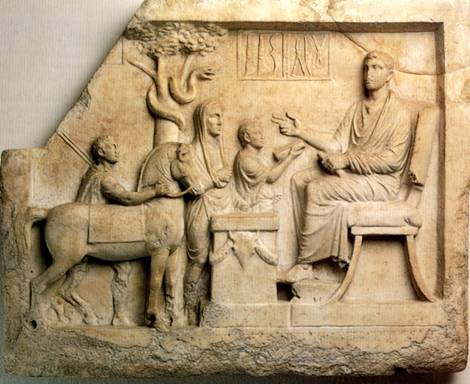Lista archport
Mensagem

[Archport] Conferencia LEGE ARTIS - The Rules of the Art, por Antja Krug
Title: Newsletter
|
Conferência Lege artis
– The Rules of the Art The
Graeco-roman doctor between ideal and profession por Antja Krug Uma conferência promovida pelo Grupo de Amigos do com o apoio do Grupo de Amigos do Instituto Arqueológico Alemão
(Delegação de Madrid) Dia
17 de Novembro de 2009, às 18 horas. Entrada livre
Relevo de
médico de Berlim (‚Berliner Arztreliefs’) Antikensammlung,
Staatliche Museen zu Abstract Lege artis
– The Rules of the Art The Graeco-roman doctor between ideal and profession With the rise of
city-states and large cities in history, foremost in classical The physician was
expected to have a comprehensive knowledge of diseases and traumata, of their
causes, symptoms and remedies, either by his own practice or through the
extensive and widespread medical literature. Theoretical knowledge he could
acquire, too, by studying at famous doctors in the metropolis of antiquity as Qualified and
successful physicians were not necessarily citizens of the states or cities
where they lived and worked. On the contrary, those cities solicited doctors,
and of course they were entitled to a misthós,
a honorarium. Small communities
or villages got from time to time a visiting physician, especially when on the
occasion of feasts and religious celebrations they housed large numbers of
attendants. Those doctors who looked on such occasions after the people without
charging a honorarium or treated
a serf without misthós, but katá ten téchnen – lege artis ! were
honored by the city elders, with golden wreaths, statues or privileges which
made them equal to the citizens. |
| Mensagem anterior por data: [Archport] Egypt asks British Museum for the Rosetta Stone | Próxima mensagem por data: [Archport] Padrão dos Descobrimentos | Conferência | Portos Marítimos e Fluviais de Portugal Islâmico | 24 Outubro |10h30 |
| Mensagem anterior por assunto: [Archport] Conferencia em Lagos | Próxima mensagem por assunto: [Archport] Conferencia sobre la Serra d'Ossa alentejana en el DAI de Madrid |

